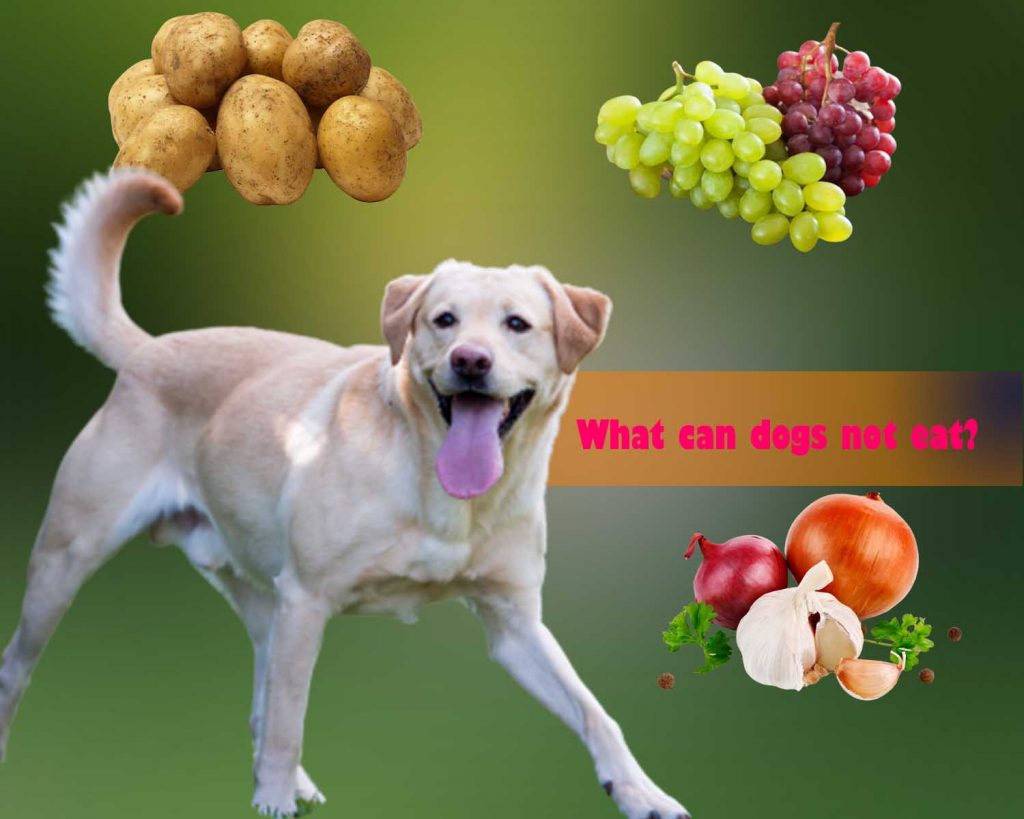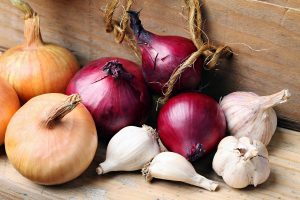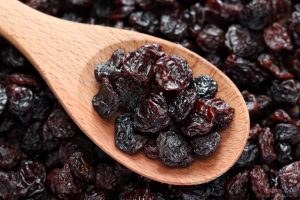What can dogs not eat? Not all foods that are suitable for humans are also healthy for dogs. Since our metabolism differs significantly from that of a dog, some foods that are palatable to us can lead to serious symptoms of poisoning in dogs.
BONES: Bones can be dangerous to dogs because of the splinters that may injure the dog’s esophagus, as well as the dog’s stomach or intestines. You should therefore avoid boiled tubular bones in particular, but also fine poultry bones when feeding to be on the safe side.
What foods can dogs not eat?

Chocolate is known to be made with cocoa, which contains theobromine. The alkaloid has a similar effect on humans as caffeine. Dogs cannot break it down and use it, however. If you consume food containing cocoa, circulatory problems, digestive problems and tremors are the result.
The lethal dose of theobromine is between 100 and 300 mg / kg body weight. How much of the toxic active ingredient is contained in a bar of chocolate cannot be answered across the board, as the theobromine content depends on the type of chocolate. As a rule of thumb, one can say: the darker the chocolate, the more theobromine it contains and the more dangerous it is for the dog to consume. While white chocolate only contains an average of 0.009 mg / g, dark chocolate can contain up to 16 mg / g and cocoa powder even up to 26 mg / g. Consuming a 100g bar of dark chocolate would put smaller breeds of dogs as well as puppies and young dogs of all breeds at risk of life threatening; with a Chihuahua half is enough.
Onions, garlic, wild garlic

For us pet owners, onions and garlic are used to flavor or refine many hearty dishes. These popular leek plants are used raw, cooked or fried in every household. However, caution should be exercised with dogs. Onions and garlic contain sulfides, which are toxic to dogs. They destroy the red blood cells and can thus cause anemia or inflammation of the stomach and intestinal mucous membranes. No matter whether raw, cooked or in powder form – from around 5 grams per kilogram of body weight onions or garlic are harmful to dogs. For a medium-sized dog, a clove of garlic would be fatal.
The first symptoms of onion poisoning are usually vomiting and diarrhea. After a few days, pale mucous membranes, bloody urine, refusal of water and food may become noticeable, suggesting anemia. This poisoning can lead to death.
Xylitol & other sweeteners
Sweeteners are extremely dangerous for our four-legged friends. Even small amounts can be life-threatening. But why are sweeteners so dangerous for dogs? The reason for this is the strong release of insulin after consuming the sweeteners, which leads to a drop in the sugar level. It is true that blood sugar is controlled by insulin in both humans and animals. The difference is that sweeteners do not affect this process in humans. In dogs, an extremely large amount of insulin is produced in a very short time, so that the first symptoms of intoxication appear after just 20 minutes. The sweeteners erythritol, aspartame, sorbitol and stevia only slightly influence the insulin release, but can trigger gastrointestinal symptoms.
The best known and most dangerous is the sweetener xylitol, xylitol or E967. This birch sugar can be found in many foods such as candy, chewing gum, baked goods and toothpaste. Xylitol is particularly used in sugar-free foods or diet products. A drop in blood sugar can occur from as little as 0.1 grams per kilogram of body weight. There is also the risk of acute liver failure. Here the lethal dose is 0.5 grams of xylitol.
After taking xylitol, dogs may become apathetic, weak, have seizures, shiver, vomit, and have palpitations.
What vegetables can dogs not eat?
Raw potatoes, raw eggplants and tomatoes: are nightshades that contain poisonous solanine.
In any case: keep an eye on your four-legged friend if there should be marrow bones to nibble on – so you can act immediately in an emergency. You know your four-legged friend best and can assess it: does it devour its food or does it chop it up thoroughly? Does he react to bones with hard feces or does he tolerate them without any problems?
What fruits can dogs not eat?

Grapes & Raisins; Fresh grapes are great as a snack for people. However, these are poisonous to some dogs. The oxalic acid in the grapes increases the calcium levels in the dog’s blood dramatically, causing the kidney levels to rise. It does not matter whether the dog eats seedless grapes or grapes with seeds. These substances are present in even larger quantities in raisins or pomace. Warning: Oxalic acid is also found in other foods such as rhubarb, Swiss chard and spinach. Poisoning symptoms can occur in dogs from 10 grams per kilogram of body weight.
But opinions on this are divided. While American scientists have found a critical amount of 116 grams of grapes per kilogram, researchers from the UK report a lethal amount of 16 grams of raisins. Not all dog breeds are equally at risk. Grapes are only poisonous in some dogs with a predisposition to intolerance.
Almonds: May contain the neurotoxin hydrocyanic acid.
Avocados: Some types of avocados contain persin, which is toxic to dogs. Can lead to heart muscle damage. The first symptoms are cough, shortness of breath, and increased heart rate.
Macadamia nuts: Only recently known, but macadamia nuts can cause weaknesses or symptoms of paralysis. Which substance in the nuts triggers this is still unknown. Just four nuts can cause symptoms of poisoning in a dog weighing 15 kilos. Nuts are generally not good for dogs because of their high fat and phosphorus content.
Stone fruit: Can damage the stomach lining and the swallowed kernels can lead to an intestinal obstruction.
These drinks are toxic to dogs
Milk and cream: According to estimates, around half of adult dogs suffer from lactose intolerance – this is why dogs should generally not be given milk.
Caffeine-containing drinks: The caffeine in coffee, cola and energy drinks as well as the tea in green and black tea cannot process a dog’s metabolism. This can lead to life-threatening cardiac arrhythmias.
alcohol: Since alcohol is one of the liver poisons and can also be toxic or even fatal in certain amounts for us humans, it is logical that it cannot be healthy for the beloved dog either.
Even small amounts can be enough to cause shortness of breath, vomiting and coordination disorders. This is because the dog’s body can only process the alcohol very slowly. Alcohol should therefore always be kept out of the reach of your animal roommates
Our previous article What fruits can dogs eat? What fruits can dogs not eat? We recommend that you read our article titled.






